Supported by the Mellon Foundation “Humanities for All Times” initiative and the Hudson River Valley Greenway.
Returning Home: A Contemporary Native Photography Exhibition
Montgomery Place Mansion, Bard College
April 6-12th, 2024
Rethinking Place: Bard-on-Mahicantuck and The Montgomery Place Mansion at Bard College will proudly host Returning Home, an exhibition curated by Rethinking Place Post-Baccalaureate Fellow Olivia Tencer and Rethinking Place Administrative Coordinator Melina Roise, open from April 6th to April 12th, 2024. This groundbreaking exhibition will feature works by four contemporary Indigenous photographers, Kali Spitzer (Kaska Dena/Jewish), Dana Claxton (Wood Mountain Lakota First Nations), Cara Romero (Chemehuevi Indian Tribe), and Wendy Red Star (Apsáalooke (Crow)), along with a written commission by Bonney Hartley (Stockbridge-Munsee Mohican), and archival records of local land transfers and the United States’ Indian boarding school history. The exhibition, centered around narratives of Indigenous families, particularly women and children, will delve into the experiences of Native peoples facing settler colonialism, focusing specifically on Indigenous child removal practices and policies.
Returning Home aims to highlight Indigenous representation, narrative, survivance, futurism, and resilience through contemporary Native art. The show will include pieces from the Forge Project’s collection, as well as a written commission from Institute of American Indian Arts MFA Candidate Bonney Hartley. An accompanying publication will provide in-depth contextualization of land dispossession in the U.S., forced removal of Native peoples in New York State, and the impact of Indian boarding schools.
The exhibition will fill various rooms within the historic Montgomery Place mansion, situated on Bard College’s 380-acre estate. While the estate is renowned for its ties to the Livingston family, Montgomery Place is committed to exploring marginalized histories, including the forced removal of the Stockbridge-Munsee Community and the estate’s use of enslaved African American labor.
Schedule & Registration
Exhibition Viewing Hours:
April 6th: 2:00-4:00pm (timed entry every fifteen minutes – register here)
April 7th, 1:00-5:00pm (timed entry every fifteen minutes – register here)
April 10-12th, 1:30-4:00pm(timed entry every fifteen minutes – register here)
Schedule of Events:
April 6th, 4:00pm: Cara Romero in conversation with Suzanne Kite. Registration required.
April 7th, 3:00pm: Dana Claxton Artist Talk, on zoom, seating available at MP visitor’s center. Register for the zoom talk here.
April 10th, 6:30pm: Cara Romero: Following the Light, Preston Cinema, Bard College. A short documentary on the work & practice of Cara Romero. No registration required.
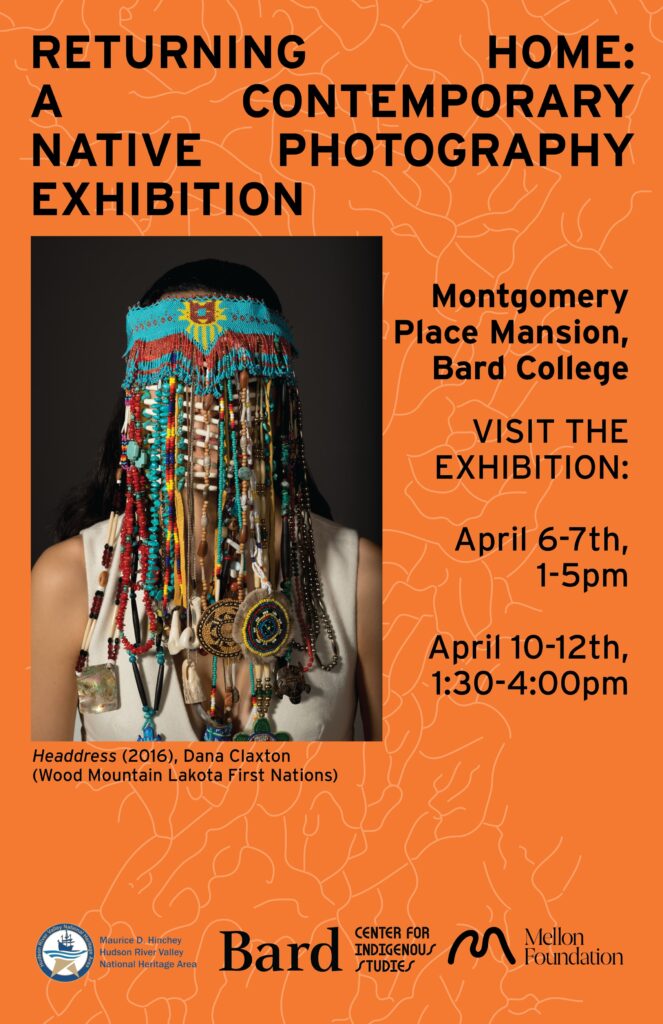
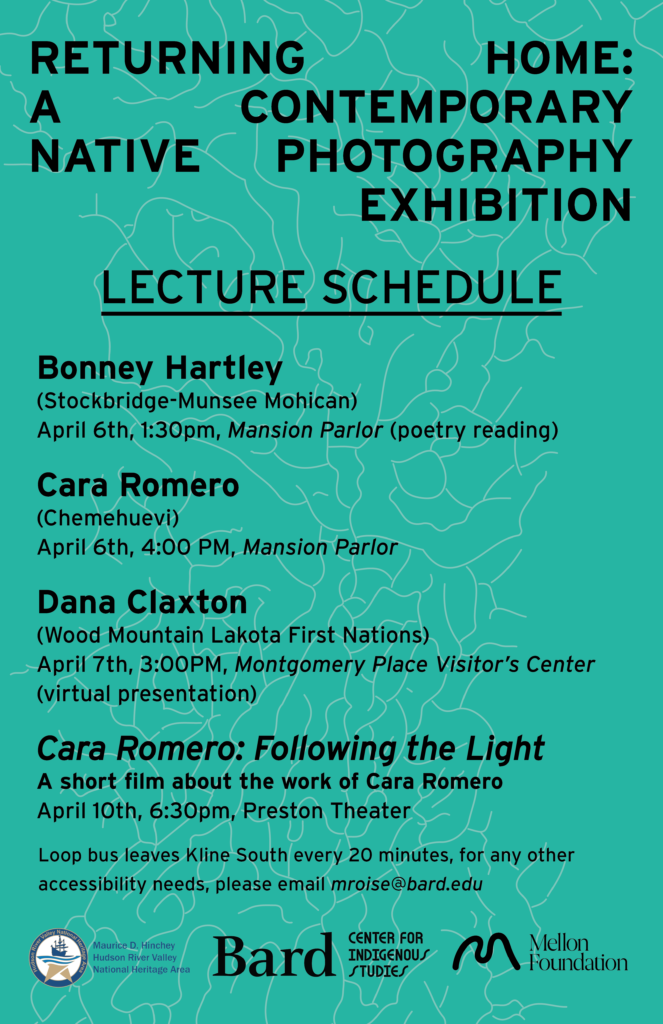
Artists
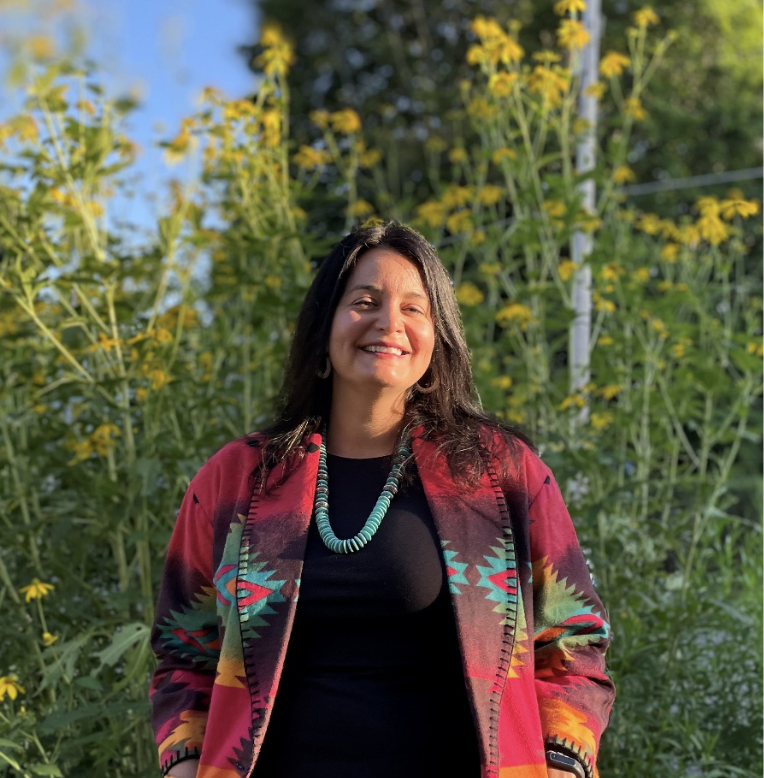
Kali Spitzer is Kaska Dena from Daylu (Lower Post), BC on her father’s side and Jewish from Transylvania, Romania on her mother’s. She is motivated by her heritage to uplift and preserve Indigenous culture and knowledge ways through artwork and documentation of her community, and traditional practices through photography. Spitzer is an Indigenous, Femme, Queer artist living on the Traditional Unceded Lands of Musqueam, Squamish and Tsleil-Waututh in Vancouver, BC.
Bonney Hartley is a ’25 MFA-Creative Writing candidate at Institute of American Indian Arts and holds an MSocSci in International Relations from University of Cape Town, South Africa. She is an enrolled member of the Stockbridge-Munsee Community and serves as a Tribal repatriation specialist. She is a founding member of Mohican Writers Circle and has forthcoming work in the Boundless exhibit catalogue (Smith College Mead Museum), The Last Milkweed (Tupelo Press), and North Berkshire Landscapes: A Celebration (Tupelo Press & Williamstown Rural Lands). Bonney lives within Mohican homelands in Williamstown, Massachusetts.
“My piece is offered to foreground and activate Returning Home with an archaeological reflection through layers of home, the land, inhabitation, removal, memory, and continuance.”
Image by Norbu Sky Hartley.
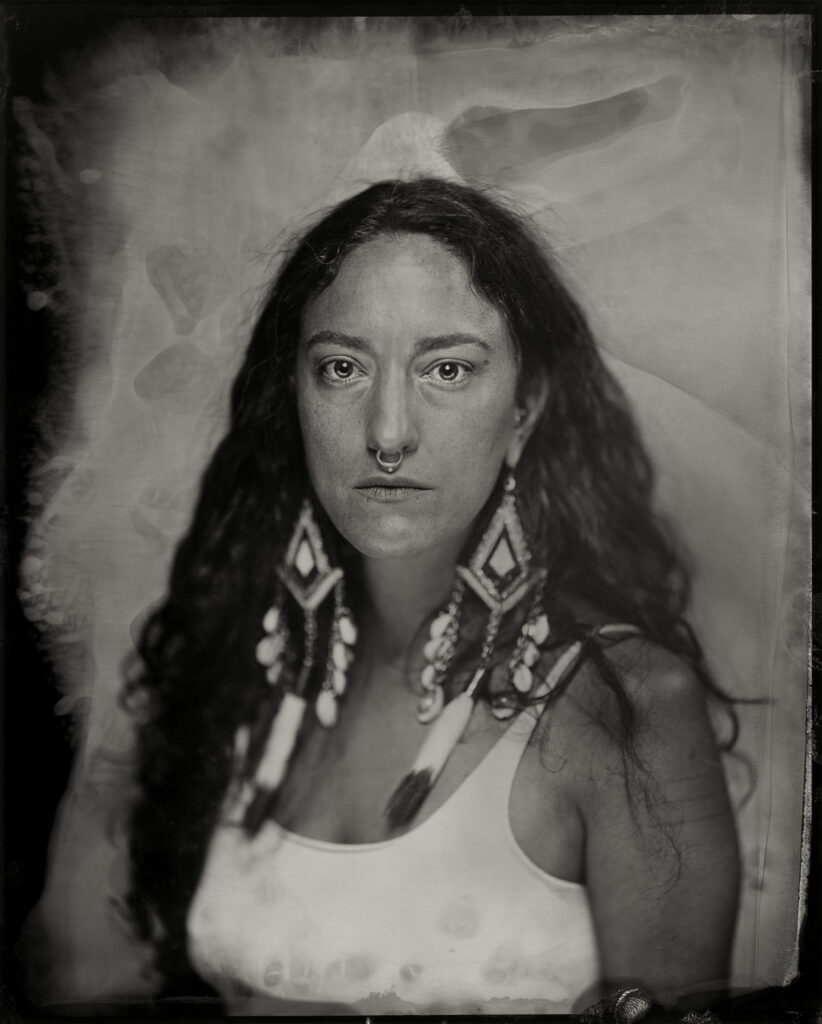
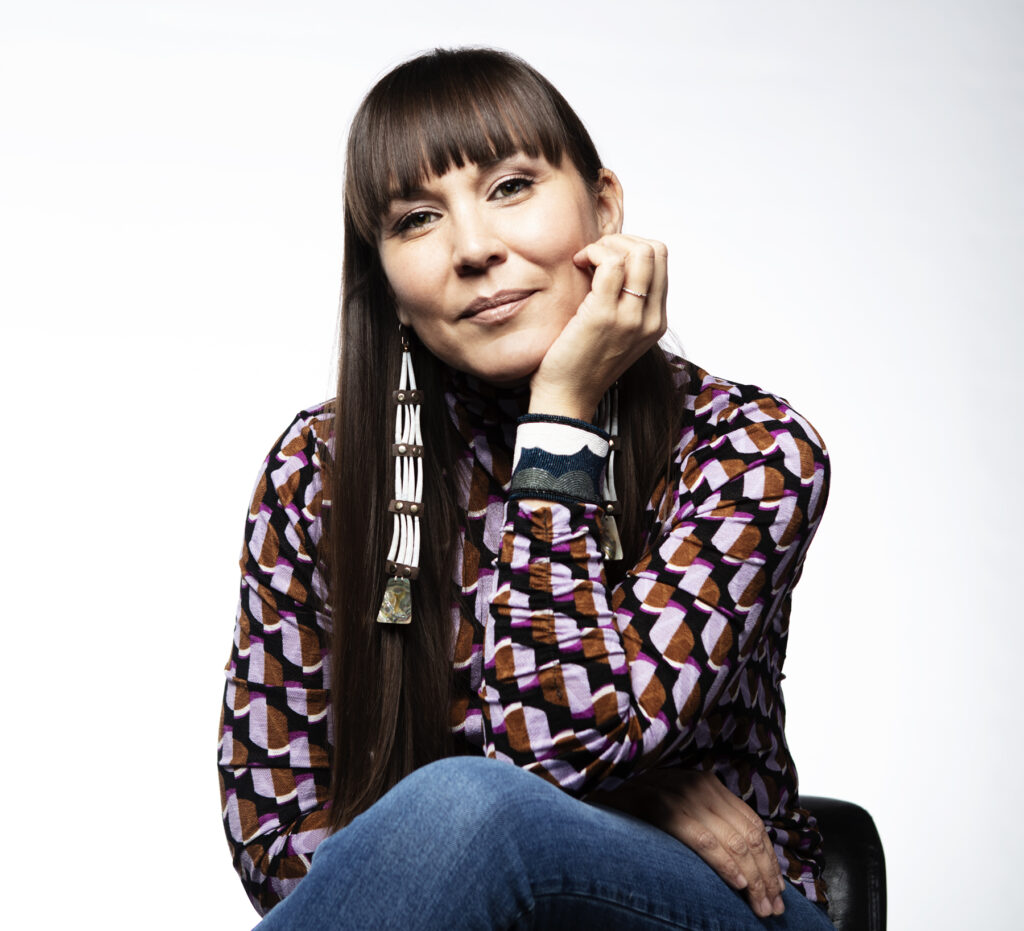
Cara Romero: An enrolled citizen of the Chemehuevi Indian Tribe, I am a visual storyteller, activist, and mother. Born to interracial parents in LA, I grew up between the reservation and big city sprawl. I am known for dramatic fine art photography that examines Indigenous life in contemporary contexts. As an undergraduate at the University of Houston, I pursued a degree in cultural anthropology and was disillusioned by how Native Americans are portrayed in academia and media. After realizing that photographs could do more than anthropology did in words, I shifted my medium. With training in film, digital, photojournalism, editorial portraiture, and commercial and fine art photography, my work is shaped by 25 years of formal study and artistic practice. Blurring the lines between fine art and activism, I tell stories of cultural memory, collective histories, and autobiography. My work commonly explores themes of environmental racism, power and belonging of Native womxn, Native sub-pop, and mythos.
As my work continues to grow and evolve, my imagery–which ranges from pointed satire to the supernatural in everyday life — conveys the complex realities of contemporary Native peoples. Now entering my mid-career, my work has been acquired by major institutions including The Met, The MoMA, The Amon Carter, as well as the Forge Project Collection. Over the past 3 years, I have been commissioned to create monumental-scale public art including the 2019 Desert X Biennial and NDN Collective’s #TONGVALAND billboard series in Los Angeles. Since 2017, I have mentored four emerging Native American women photographers in my studio. Mother of three children, I travel between Santa Fe and the Chemehuevi Valley Indian Reservation, where I inherited my childhood home and maintain close ties to my tribal community and ancestral homelands through art and activism.
Dana Claxton is a critically acclaimed artist who works with film, video, photography, single/multi- channel video installation, and performance art. Her practice investigates indigenous beauty, the body, the socio-political and the spiritual. Her work has been shown internationally and is held in public, private, and corporate collections including the National Gallery of Canada, Winnipeg Art Gallery, Vancouver Art Gallery, Mackenzie Art Gallery, Audain Art Museum, Eiteljorg Museum, Seattle Art Museum, Forge Project, Minneapolis Institute of Art, Nerman Museum of Contemporary Art and the Moose Jaw Museum and Art Gallery. She is Professor and Head of the Department of Art History, Visual Art and Theory with the University of British Columbia. She is a member of Wood Mountain Lakota First Nations located in SW Saskatchewan and resides in Vancouver Canada.
Dana comments, “I am grateful for all the support my artwork and cultural work has received. I am indebted to the sun and my sundance teachings – mni ki wakan – water is sacred.”
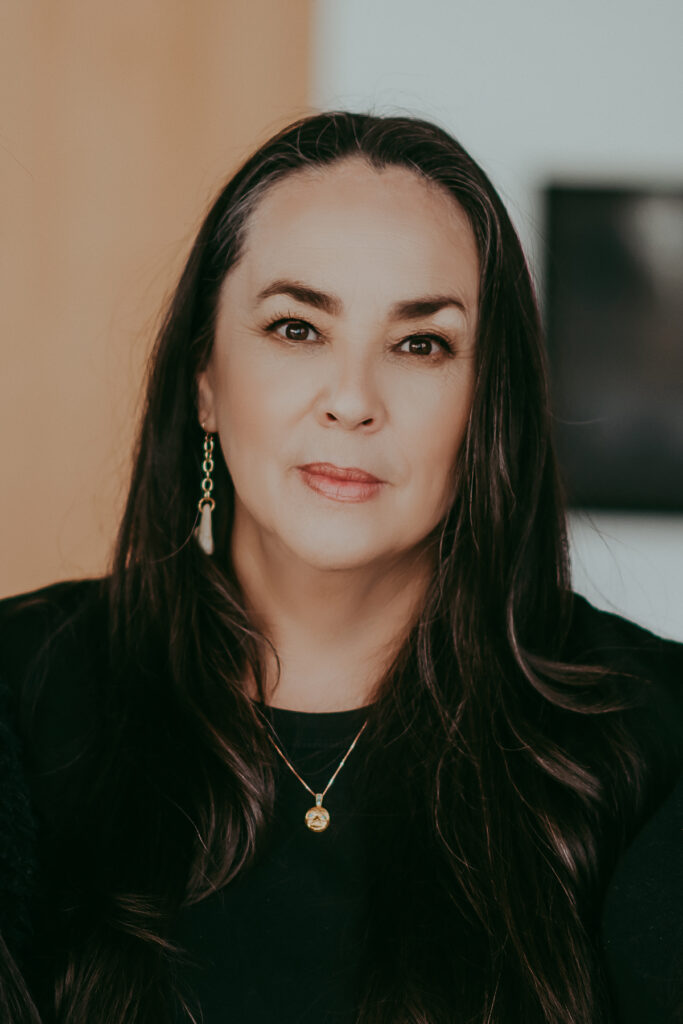
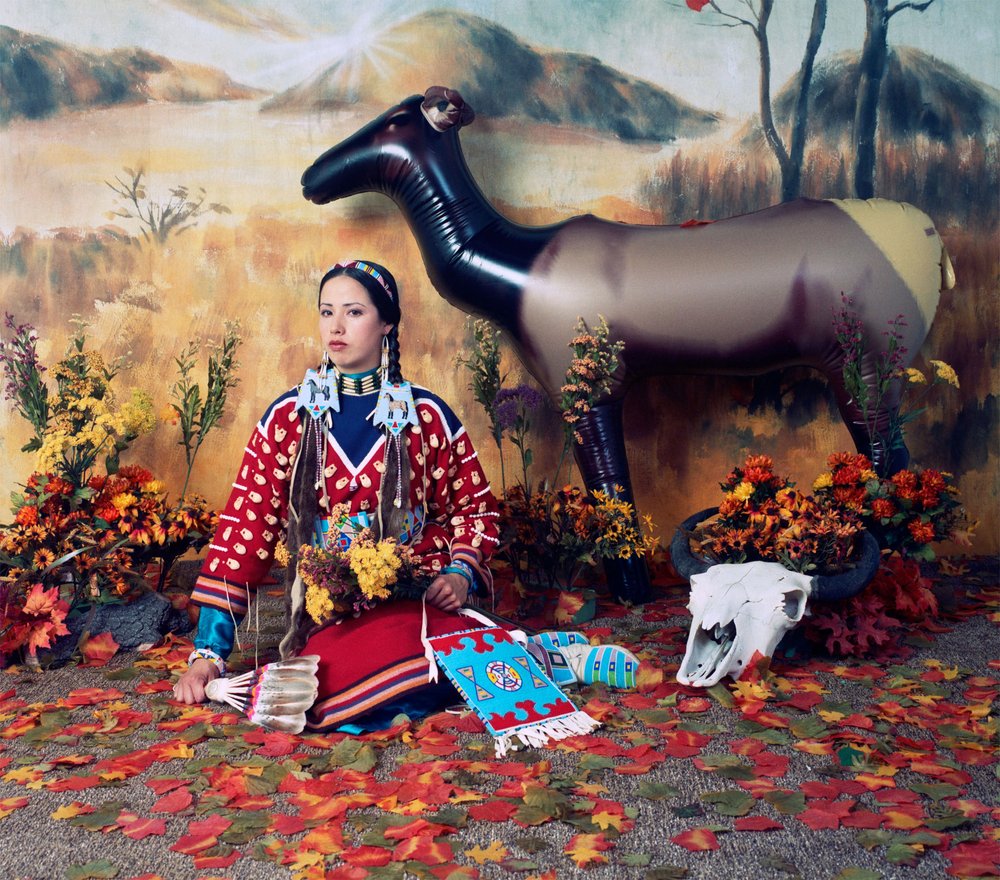
Baahinnaachísh or Baaeétitchish (One Who Is Talented), references the Apsáalooke name Wendy Red Star received while visiting home. It is the original name of her grand-uncle, Clive Francis Dust, Sr., known in the family for his creativity as a cultural keeper.
Wendy Red Star (b.1981, Billings, MT) lives and works in Portland, OR. Red Star has exhibited in the United States and abroad at venues including the Metropolitan Museum of Art (New York, NY), Brooklyn Museum (Brooklyn, NY), both of which have her works in their permanent collections; Fondation Cartier pour l’Art Contemporain (Paris, France), Domaine de Kerguéhennec (Bignan, France), Portland Art Museum (Portland, OR), Hood Art Museum (Hanover, NH), St. Louis Art Museum (St. Louis, MO), Minneapolis Institute of Art (Minneapolis, MN), the Frost Art Museum (Miami, FL), among others.
Image credit to Wendy Red Star, Fall, 2006.

